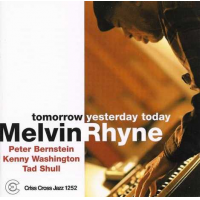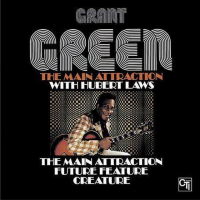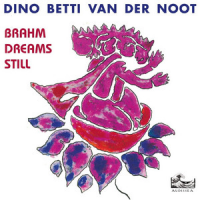Home » Jazz Articles » Liner Notes » Dewa Budjana: Surya Namaskar
Dewa Budjana: Surya Namaskar
Thank whatever deity you believe in, then, for Leonardo Pavkovic and Moonjune Records; while, as a small independent label, Moonjune continues to struggle for existence in the landscape of a new millennium music business, Pavkovic still believes in the music with a passion, and provides his artists the freedom to do what they want, when they want it. The ink on Dewa Budjana's most recent album, Joged Kahyangan (Moonjune, 2013) is barely dry and not only does the Indonesian guitarist have a new recording with Surya Namaskar, but as these notes are being written, he's in New York City making yet another album, with a completely different lineup of superlative American musicians.
Recorded in Los Angeles during two sessions in 2013, Surya Namaskar represents a significant change from Joged Kahyangan. While bassist Jimmy Johnson (Allan Holdsworth, James Taylor) is back from that session, this time the drummer is the much in-demand powerhouse Vinnie Colaiuta (Herbie Hancock, Jeff Beck), with ubiquitous guitar session ace Michael Landau (James Taylor, Renegade Creation) and drummer turned drummer/keyboardist Gary Husband (John McLaughlin, Allan Holdsworth) making valuable guest appearances on one track each.
But Johnson did more than contribute his usual unshakable yet masterful anchor to the proceedings. "Vinnie [Colaiuta] is very well-known and much-loved in the Indonesian drummers' community," Budjana explains. "I knew some of his work, mostly with [Allan] Holdsworth and [John] McLaughlin, but was not so familiar with the rest of his efforts. Someone suggested that my music should feature Vinnie, but I knew that it was difficult to book him on a session due to his busy schedule, and I've heard stories that sometimes you have to wait a few years just to get to him.
"Then I searched YouTube for videos of Vinnie and fell in love with his style," Budjana continues. "I envisioned some of my compositions as suitable for his style of playing, and knowing that Jimmy Johnson is his good friend, I asked Jimmy if he could contact him for another session in Los Angeles, and to my surprise, it happened relatively quickly. I wanted to do another album after Joged Kahyangan that was stylistically different -more edgy and with more distorted guitar, with a different overall sound; Jimmy, who enjoyed playing on the Joged Kahyangan session, made this dream possible."
While there are unavoidable traces of Budjana's Indonesian heritage running through Joged Kahyangan, it is, nevertheless, a distinctly Western-sounding album; Surya Namaskar, which means "Salute to Sun," represents a far more visible fusion of the guitarist's cultural roots with a jazz tradition defined by guitarists like Allan Holdsworth and Terje Rypdal. "My goal has been to blend the music of my country with contemporary Western music, which I've always done on my previous records," Budjana asserts.
"Maybe Joged is too smooth for some people, depending on their interpretation of 'smooth,'" Budjana continues. "On Joged Kahyangan, I only used distortion on one tune, while on this album I used it a lot; I also used a fuzz tone. The compositions were freer and more open than on Joged Kahyangan, where the music was charted and the musicians played reading those charts. On Surya Namaskar, Jimmy and Vinnie had charts, but we all went a bit off sometimes and improvised. 'Kalingga,' for example, was played entirely live in studio, but I then overdubbed some electric sitar and used some vocals and ethnic instruments to match the conceptual story of a tune that is inspired by the history of India and West Java."
That "Kalingga" is so loosely constructed is a remarkable feat in itself, given its episodic nature as it moves from Colaiuta's thundering funk groove to a middle section driven by an almost military march and another more ethereal passage, where Budjana's overdubbed sitar guitar doubles Johnson's lithe bass melody. The energy, as the piece builds, is palpable. "Yes, notes were just flying in the studio," Budjana enthuses. "We didn't have any rehearsal; 'Kalingga' was recorded with no click and no backing tracks, [just] live in studio, and very improvised. At the end of the tune, Vinnie said, 'Dewa is playing some death metal!'; I think that's his favorite tune on the album."
But as impressive as "Kalingga" is, there's plenty more to love on Surya Namaskar; in fact, choosing a favorite amongst these eight Budjana compositions may well be an exercise in futility, they're all simply that good. All the more impressive, then, that this album came together so quickly, with the entire album recorded "live off the floor" and Budjana taking the recording back to his home in Jakarta to add some minimal overdubs before sending it to Robert Feist, who finished the mix in less than two weeks.
"'Lamboya' is the second take and 'Dalam Waturenggong' the third," Budjana reveals. "All the other tunes were first takes. Jimmy is a very special guy; a phenomenal reader, he ran through all the tunes before the sessions. I prepared all the basic tracks in Jakarta -clicks, charts and sequencer. I sent the charts and MP3s to the musicians; I guess only Jimmy listened to my demo MP3s, but not Vinnie. Vinnie might have taken a quick look at the charts, but admitted that he didn't really study the music; he just came, sat at his drum kit and played, sometimes reading the charts, and often just following Jimmy and me.
"Yeah, he is Vinnie, the master," Budjana concludes. "I know Vinnie does tons of sessions, but apparently he immensely enjoyed this one, and on more than one occasion complimented my playing and compositions."
For good reason. If Joged Kahyangan represented a softer side to Budjana, much of Surya Namaskar finds Budjana kicking ass -and hard. But that doesn't mean there aren't moments of beauty to be found. The gentle title track is named after the Yoga position "good morning sunshine" and features a characteristically bluesy solo from Michael Landau in contrast with Budjana, who is featured on acoustic guitar. "I love the surya namaskar name," Budjana says. "It always creates energy in the morning. The slowest song on the album, Michael was perfect for this tune. Back in the '80s and '90s, I listened to a lot of Michael's work; he was, together with Steve Lukather, one of my main guitar inspirations when I moved permanently to Jakarta, playing in Top 40 bands."
Much of Surya Namaskar is, in fact, an homage to some of the guitarists who have been touchstones to Budjana's own emergent jazz style. "'Campuhan Hill' is the name of a village near Ubud, Bali's center for arts and culture," Budjana explains. "I was inspired by Ralph Towner, using open strings in standard tuning. 'Duaji & Guruji' means 'grown man and guru' in Balinese, and comes from a dream I once had that John McLaughlin was playing with me. I still hope to play with McLaughlin someday, or have him solo on one of my albums."
But the most poignant source for a tune on Surya Namaskar has to be the dark-hued, harmonically ambiguous "Capistrano Road." "I dreamed of meeting Alan Holdsworth, my guitar hero, in person. During my visit to Los Angeles in January 2013, Leonardo [Pavkovic] kindly arranged this meeting. I was emotionally moved by this amazing guitarist and unique person. After spending few hours at his (then) home in San Juan Capistrano in the company of Leonardo, a few Indonesian friends and the master, we drove back to my friend's house. I was, at the same time, both happy and sad, and composed the melody for this tune in my head. The first thing I did when back in Jakarta was to record all the guitar parts. When I went to Los Angeles for the second part of the recording, in October 2013, we recorded the drums and bass with Jimmy and Vinnie."
It's a powerful tribute, with Budjana's silken, overdriven and sustaining tone an unmistakable reference to Holdsworth's sophisticated and unique language, while still speaking with Budjana's own voice.
Other tunes speak to Budjana's culture, such as the 11/8 drum-and arpeggio-driven "Lamboya," the name of a beach town on the island of Sumba, where Budjana was born, while "Fifty" simply refers to Budjana's recent milestone. "I composed this tune on my 50th birthday in August 2013," Budjana says. "When I presented the tune to Jimmy [Johnson], he thought he would be doing too many bass solos, so he suggested we ask Gary Husband to contribute a synth solo. I contacted Gary and he recorded the solo in his place in London, and sent me the file, which was subsequently mixed with the music that the three of us played live in studio."
The sum total of Surya Namaskar is most definitely greater than its individual parts. Together with his previous Moonjune recordings -Dewa in Paradise (2011) and last year's Joged Kahyangan -Surya Namaskar paints the ongoing portrait of a guitarist who may be a superstar in the Indonesian pop world as a founding member of the multi-million selling Gigi, but whose lesser-known credibility and, more importantly, visibility as a jazz guitarist is slowly on the ascendance, as more and more international jazz fans discover the depth, the heart, and the profound spirituality of Dewa Budjana, at fifty a new guitar hero of strength, creativity and significance.
Liner Notes copyright © 2026 John Kelman.
Surya Namaskar can be purchased here.
Contact John Kelman at All About Jazz.
With the realization that there will always be more music coming at him than he can keep up with, John wonders why anyone would think that jazz is dead or dying.
Track Listing
Fifty; Duaji & Guruji; Capistrano Road; Lamboya; Kalingga; Campuhan Hill; Surya Namaskar; Dalem Waturenggong.
Personnel
Dewa Budjana
guitar, electricJimmy Johnson
bassVinnie Colaiuta
drumsGary Husband
drumsKang Pupung
violinKang Iya
harpMang Ayi
vocalsMichael Landau
guitarAdditional Instrumentation
Dewa Budjana: electric and acoustic guitars; Jimmy Johnson: bass guitar; Vinnie Colaiuta: drums; Gary Husband: synthesizer (1); Kang Pupung: tarawangsa (Sundanese violin) (5); Kang Iya: Kacapi (Sundanese harp) (5); Mang Ayi: vocals (5); Michael Landau: electric guitar (7).
Album information
Title: Surya Namaskar | Year Released: 2014 | Record Label: Moonjune Records
Tags
PREVIOUS / NEXT
Support All About Jazz
 All About Jazz has been a pillar of jazz since 1995, championing it as an art form and, more importantly, supporting the musicians who make it. Our enduring commitment has made "AAJ" one of the most culturally important websites of its kind, read by hundreds of thousands of fans, musicians and industry figures every month.
All About Jazz has been a pillar of jazz since 1995, championing it as an art form and, more importantly, supporting the musicians who make it. Our enduring commitment has made "AAJ" one of the most culturally important websites of its kind, read by hundreds of thousands of fans, musicians and industry figures every month.

























